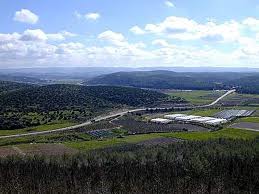Forty-five minutes southwest of Jerusalem, visitors to Israel can experience one of the country's most tightly held secrets: the Valley of Elah. The Oscar-nominated movie, In the Valley of Elah, starring Tommy Lee Jones and Charlize Theron, may have done more for its name recognition than David's epic battle against Goliath which raged here, but this region, flanked by the gently rolling hills of Judea, still remains one of the Holy Land's less frequented gems.
Minutes after exiting Highway 1 linking Israel's two major cities of Jerusalem and Tel Aviv, the verdant approach to the Valley of Elah gives way to secluded monasteries and vineyards where Israelis and more and more travelers come to sample the rising stars in Israeli wines.
The region surrounding the Valley of Elah is one of the hotspots of Israeli viniculture. Wine exports from the country have doubled since 2001 with France the number two importer of Israeli wine after the United States.



